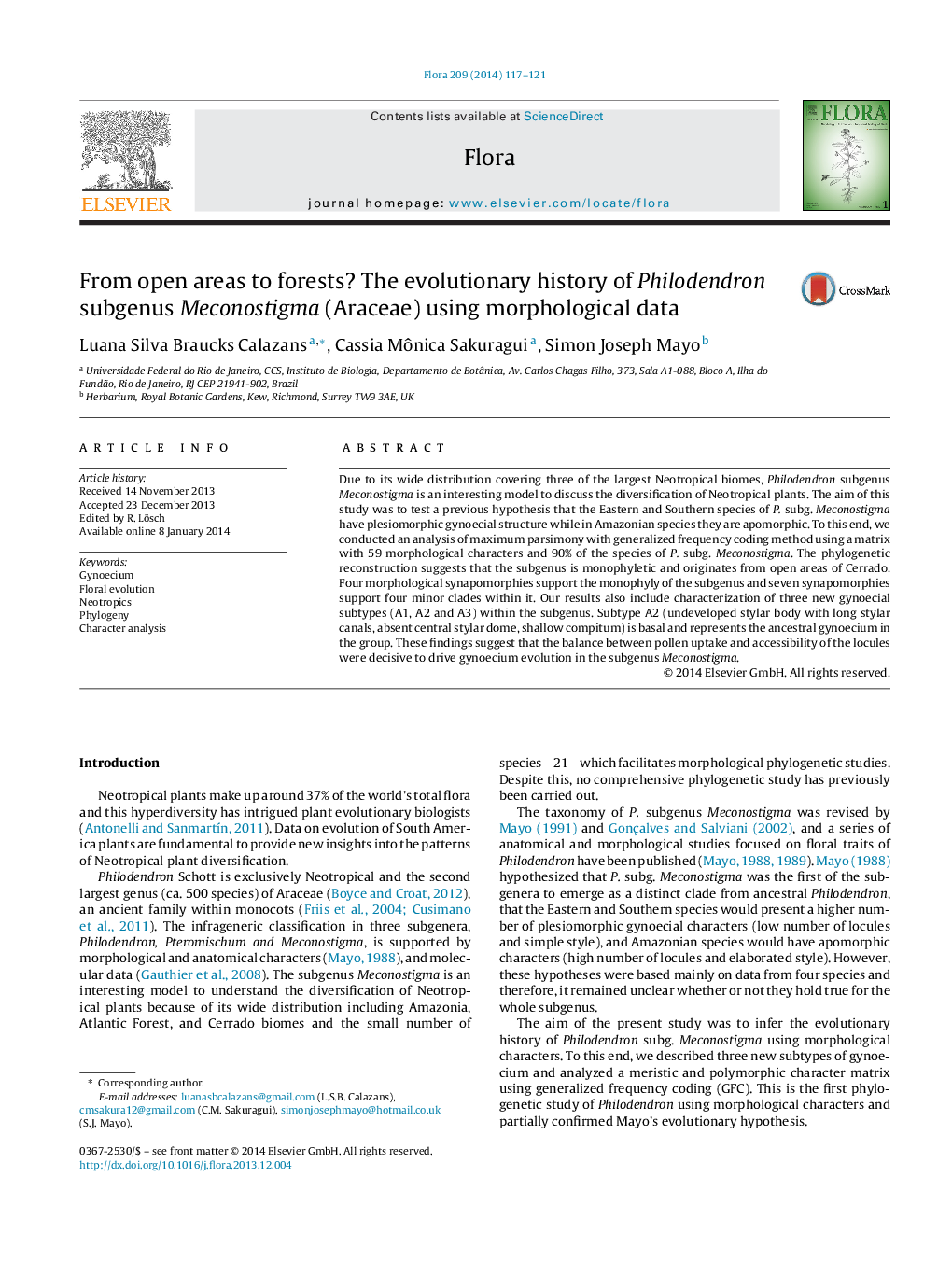| Article ID | Journal | Published Year | Pages | File Type |
|---|---|---|---|---|
| 2179606 | Flora - Morphology, Distribution, Functional Ecology of Plants | 2014 | 5 Pages |
Due to its wide distribution covering three of the largest Neotropical biomes, Philodendron subgenus Meconostigma is an interesting model to discuss the diversification of Neotropical plants. The aim of this study was to test a previous hypothesis that the Eastern and Southern species of P. subg. Meconostigma have plesiomorphic gynoecial structure while in Amazonian species they are apomorphic. To this end, we conducted an analysis of maximum parsimony with generalized frequency coding method using a matrix with 59 morphological characters and 90% of the species of P. subg. Meconostigma. The phylogenetic reconstruction suggests that the subgenus is monophyletic and originates from open areas of Cerrado. Four morphological synapomorphies support the monophyly of the subgenus and seven synapomorphies support four minor clades within it. Our results also include characterization of three new gynoecial subtypes (A1, A2 and A3) within the subgenus. Subtype A2 (undeveloped stylar body with long stylar canals, absent central stylar dome, shallow compitum) is basal and represents the ancestral gynoecium in the group. These findings suggest that the balance between pollen uptake and accessibility of the locules were decisive to drive gynoecium evolution in the subgenus Meconostigma.
